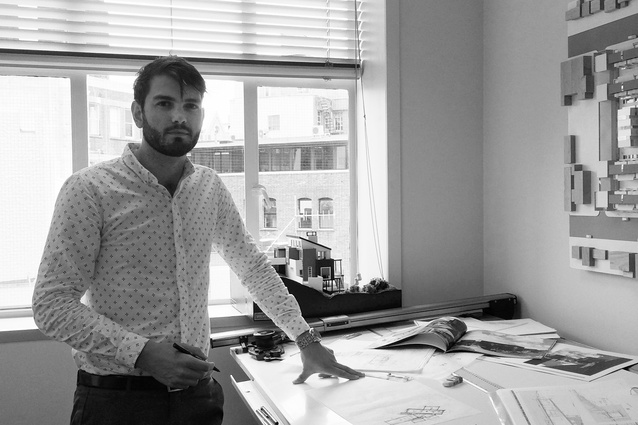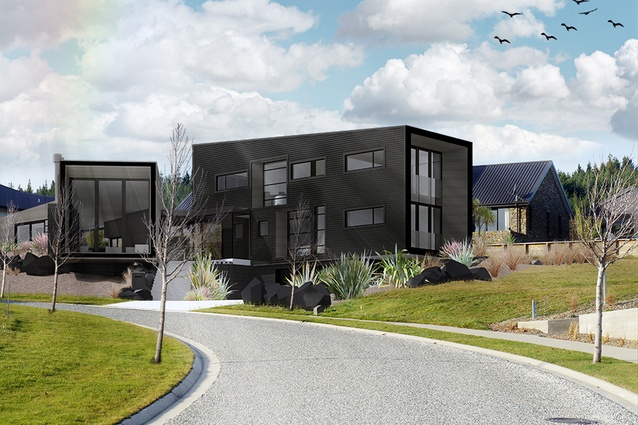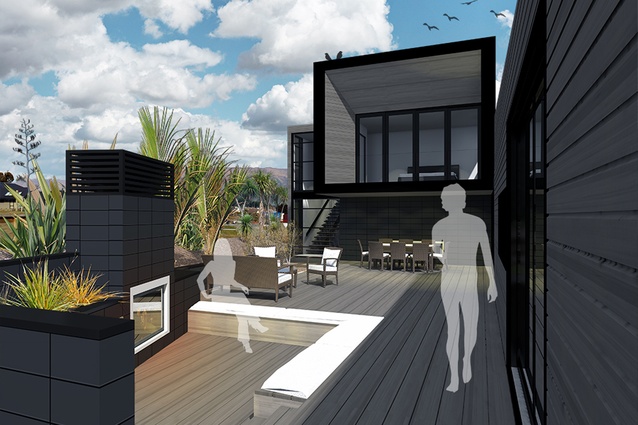Zachary Blue
Houses talks to architectural graduate Zachary Blue of McAuliffe Stevens.
Houses: Did you want to be an architect when you were growing up?
Zachary Blue: Not specifically. I was always passionate about design and other creative subjects throughout school, along with sciences and math – which turned out to be fortunate in later years, as each is a prerequisite for an architectural degree. In saying that, I believe my passion started far earlier on in life, when Lego was a favourite pastime of mine. Building, creating, pushing, moving and tearing down, then reconstructing the pieces of Lego; my older brother and I took over my wardrobe quickly with a whole town of impossible design creations, defying gravity and social norms. Obviously, at the time it was just a bit of fun!
Houses: Can you describe your architecture career thus far?
ZB: After completing my Bachelor of Architectural Studies and my Masters of Architecture (Professional) at Victoria University, I moved back to my hometown of Dunedin and am currently working at McAuliffe Stevens. It’s here that I have quickly learned that the ‘hands-on’, design side is only a small part of an architect’s role but is, incidentally, the part of architecture I am sinking my teeth into.
That said, I’ve also realised that design focus is integral to all the work we do. Fortunately, in my current position I have had the opportunity to design across a range of these aspects; from designing and organising media for the company (which seems to be a very consistent beginning role as a graduate of architecture), designing custom commercial office joinery furniture, small- and large-scale office fit outs, residential projects (including multi-residential), university fit outs and designs, through to highly specialised medical fit outs.
The working environment at McAuliffe Stevens has allowed me to learn extremely quickly and under the guidance and support of directors Craig McAuliffe and Preston Stevens, I am looking towards registering within the next year.
Houses: What are you working on at the moment?
ZB: I have been given the opportunity to design and document a holiday house for my parents on a prime site in Wanaka. The idea is that the house will also become their primary residence once they retire. The concept focuses on several architectural methodologies: a directional form, which allows framed views of the lake, town, and surrounding mountains without the interruption of neighbouring residential dwellings; the creation of a large, sheltered exterior entertainment area that still had the potential for lake views, and; boldness of form while resting upon the site with grace. This last has been achieved with large cantilevered extrusions to create the illusion of a floating structure.
Looking at the house from an entirely surface-level viewpoint: the wing comprising the public spaces (living, dining, kitchen, media room and entrance) is clad in vertical cedar weatherboard, chosen for its quality to patinate over time. This natural aging is evocative of emotion, change and life, as exposed to the surrounding environmental elements. The open-plan design of the area, the integration between spaces, the expressing of the occupants’ lifestyle and its connection to its immediate surroundings and beyond, allow this space to remain relevant to all who experience it.
The private spaces (bedrooms, bathrooms and laundry) wing on the other hand, is clad in a profiled metal cladding system that acts as a protective layer. The forms that make up this wing display recessed ‘cavities’ at each end, which reveal an inner cedar cladding – a play on the relationship between one’s private space vs. public entertainment. The planning here was very conscious of not allowing the public to see all aspects of an element until close enough to utilise its function, with screens, hidden doors, changing of materials, enclosed circulation and a more refined sense of space.
Moving further into the interior, a very contemporary setting is realised with options of allowing the home to be open to the fresh environs Wanaka has to offer. This was followed throughout the house with large sliding doors in almost every bedroom and living area to blur the boundaries between the interior and exterior. This also has the added benefit of allowing these rooms to appear much larger in size.
We’re looking forward to the start of construction and completion of the home in 2015.
Houses: What do you enjoy most about working in architecture?
ZB: Architecture is proving to be very rewarding and inspiring. Learning architecture never stops, whether you are at work, home, walking down the street, or socialising. Architecture is always around you and you’re constantly learning new ways of design, or discovering how certain aspects of design have been achieved. I must admit though, it wasn’t always so enjoyable; starting out was one of the most challenging periods of my life, feeling lost and upset that I wasn’t a greater asset to the company I was working for; a feeling that lasted about a year. However, through working closely with the McAuliffe Stevens’ directors, hard work, perseverance, listening and long hours, I was able to work through it all, gaining invaluable experience and the opportunity of designing a home for my parents that we all can be proud of.
Houses: If you could design a house anywhere in New Zealand, where would it be?
ZB: This is a hard question to answer, as I am excited about every project and each site, all of which have different obstacles and opportunities hidden within them. However, if I had to choose it would have to be anywhere on the verge of water, due to my strong belief that we are very much edge dwellers and therefore, not only from a client’s pointof view but for an architect/designer, this project would instantly become very exciting.












